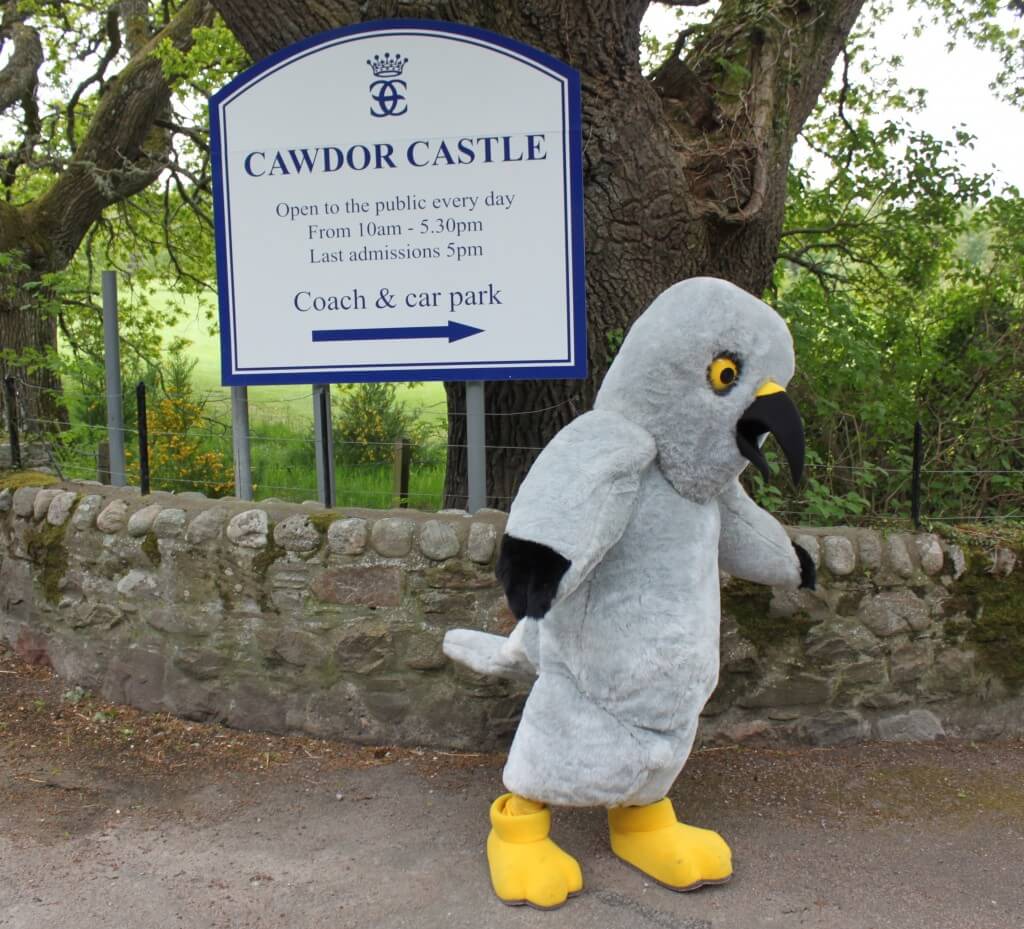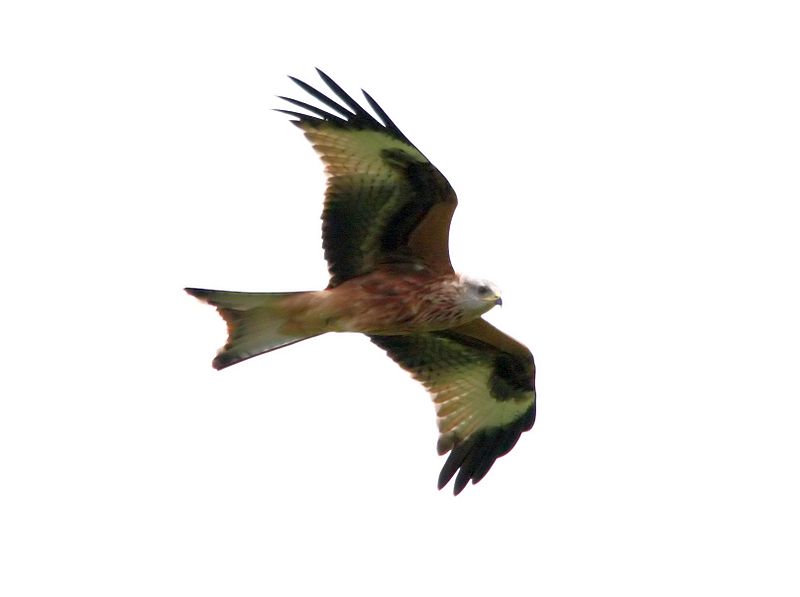Two more Red Kites have been confirmed by Scottish Government testing to have been illegally killed in north Scotland. Both of these incidents took place in 2014 and are now being made public as the Police have concluded their enquiries.
The first victim was found last June near Beauly, and was subsequently confirmed by post-mortem, at the SAC Veterinary laboratory in Inverness, to have been shot.
The second Red Kite was found in September 2014, some 5 kilometres south-east of Cawdor village in Nairnshire. It was confirmed by Scottish Government testing to have been illegally poisoned with a banned pesticide. This female bird was part of a successful breeding pair which bred at Cawdor Castle in Nairnshire in 2014, representing the first breeding record of Red Kites in the county for over 100 years.
Both of these birds had been fitted with satellite tags by the RSPB as part of a wider project to follow the movements of these birds and look at factors influencing their survival. It is doubtful whether either of the corpses of these birds would have been found if the satellite tags had not been in place.
The importance of satellite tags to ending raptor persecution is now pretty obvious to everyone. Even a former gamekeeper in Chapter 6 of Inglorious points to it as the way forward. So it’s good that Henry was fitted with a satellite tag at the Bird Fair last week, and that Findlay Wilde persuaded Ecotricity to fund more satellite tagging, and that Lush are funding tags here there and everywhere through sales of bathbombs.
Duncan Orr-Ewing, Head of Species and Land Management for RSPB Scotland said: “Since Red Kite reintroductions began in Scotland in 1989, over 100 birds have been confirmed as illegally killed, with a significant majority of the victims found poisoned. The real figure will be much higher as the finding of these satellite tagged birds demonstrates. Our scientific modelling work has shown that illegal persecution of Red Kites, particularly in the north of Scotland, is having a significant impact on population growth and range expansion”.
He went on to say: “The Red Kite is a universally popular species amongst the public and tourists, featuring highly in recent polls to find the UK’s national bird. It poses no threat to land use interests, however due to its scavenging behaviour, it is vulnerable to the indiscriminate use of illegal poison in the countryside. We encourage anybody with information about the use of illegal poison or other wildlife crimes to contact the police”.
Bill Kidd MSP, the Red Kite Species Champion said: “I believe that whoever is responsible for these crimes is bringing a lot of decent law-abiding people in the highland community into undeserved disrepute through their despicable actions. The people of the Black Isle are to be strongly commended for their care of and interest in the Red Kites and other raptors in the area and I’m sure the same would happen in Nairnshire if the birds were allowed to spread there. I would ask if anyone knows who the perpetrators of these crimes of shooting and poisoning these magnificent birds are they should pass this information on to the police.”
MacBeth was, of course, Thane of Cawdor in that Scottish play, which more or less ends with more or less the quote that is the title of this blog.


Duncan’s (that’s Orr-Ewing rather than Thane of Cawdor) quote “is having a significant impact on population growth and range expansion” really needs to be much, much more clear and striking for general consumption – ‘significant impact’ is over used.
How about –
Continuing criminal activity in the area around Inverness over the 20 or so years since the re-introduction has deprived ordinary people in a huge area of the highlands and Nairnshire of sight of this wonderful bird because killing through poison, trapping and shooting has almost entirely prevented the spread of the birds.
My first thoughts on this matter (and they won’t be my last) is that the provision of anti-poison dogs by the Scottish Government is long overdue. The disgrace of illegal poisoning has been with us for decades and is not going to go away any time soon.
What with its (near) state of bankruptcy and the massive human migration problems it currently has to deal with, I can understand why this service had to be financed by international donations in relation to the poisoning problems in Greece. But here in Scotland/UK, surely law enforcement should not need to go cap-in-hand to the public to provide funds for this necessary tool.
And then wouldn’t it be nice to form a register of landowners who have volunteered to have these dogs check out their land and outhouses at any (reasonable) time. Of course what would be interesting would be the gaps in a map where some landowners had withheld their permission!
Whilst this may sound a bit radical, leaving poison out in the countryside is an (almost) unbelievably reckless thing to do and something radical needs to be done about it now. What the public may not know and what our governments somehow refuse to acknowledge is just how dangerous this activity is with many incidents in the past proving that sufficient quantities of poison had been left out to kill several humans.
I recall going on holiday to Mull during the time of the last foot & mouth outbreak and seeing first hand the scale of the financial disaster that was inflicted upon the tourist industry, an industry that is essential to Scotland and the people of Scotland.
Just imagine the damage that would be done to this industry if one child died from poisoning because their parents had no idea that they were bringing their family to a country that ‘allowed’ poisons to be left indiscriminately in our countryside. Remember some of these poisons can be absorbed through the skin, no need to ingest them.
So come on Scottish Government, lets….. double (our) toil and (resolve our) trouble!
All I can say is sick and sad individuals who deliberately shoot and illegally poison these wonderful birds of prey.
This is sad news and Scottish Land & Estates have made a statement of condemnation on this today. I thought though that your readers might like to know that the nest mentioned by RSPB near Cawdor Castle has now had a replacement female arrive and the pair have successfully fledged three chicks. This is great news and all locally are delighted. It was a pity the media releases and media coverage did not mention this. Scottish Land & Estates statement here:
http://www.scottishlandandestates.co.uk/index.php?option=com_content&view=article&id=4531:call-for-action-on-red-kite-deaths&catid=71:national&Itemid=107
I have read the SLE statement. I am as impressed with their response as I am with the lack of real action by Police Scotland, who should let local people know when there is even a suspicion of poisons left lying on estates. You should be in no doubt that it is employees of SLE members who are shooting and poisoning raptors in the North of Scotland. Unless you follow the strange logic that the poison comes from the feeding station, and that the birds are shot by RSPB members? In relation to the SLE being disappointed with the fact that they did not learn of this before now, perhaps you think the Police should inform SLE and the SGA before they start an investigation?